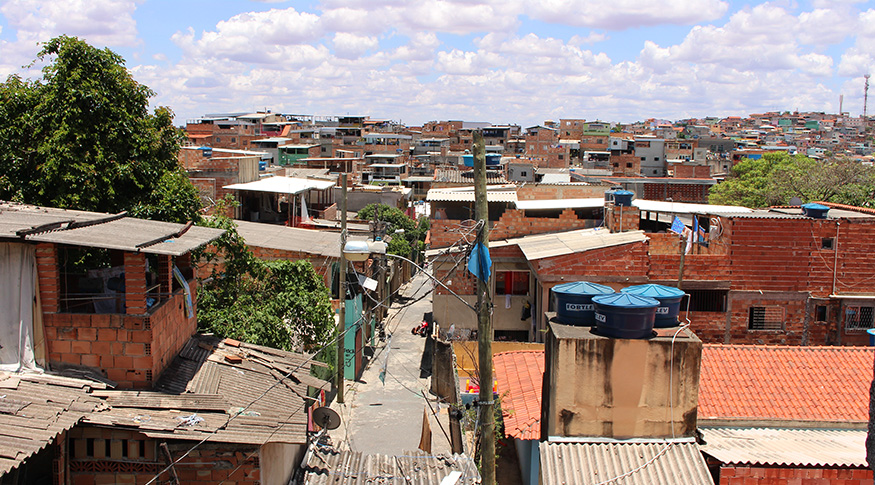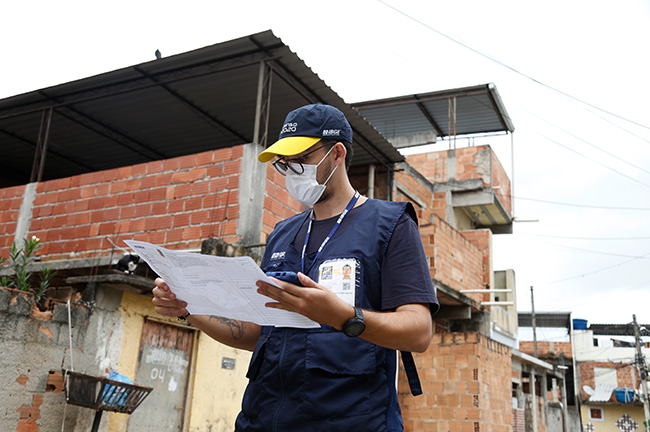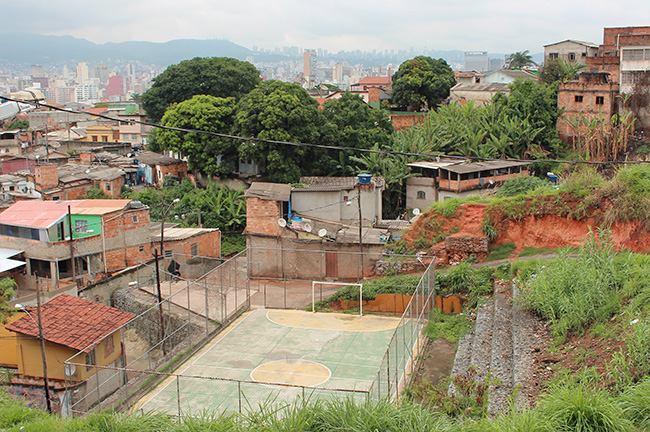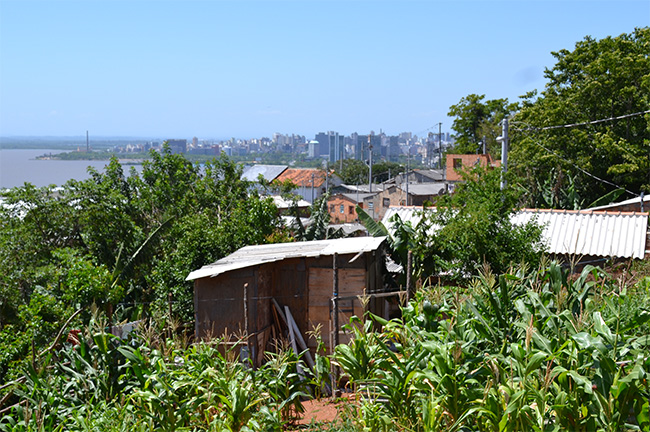2022 Census
IBGE is ready for challenge of enumerating subnormal agglomerates
June 06, 2022 02h00 PM | Last Updated: June 07, 2022 05h20 PM

The 2022 Population Census begins on August 1st and the IBGE is checking the last details to face many challenges of the census operation. One of them is to enumerate slums, communities, slums in villages, slums in deep valleys, stilt houses and other denominations, which change according to the Brazilian region. According to the IBGE, subnormal agglomerates are “irregular occupation of terrains for the purpose of living in urban areas and that, in general, are characterized by an irregular urban pattern, lack of basic public services and localization in areas restricted to occupation.”
Aiming at guiding the data collection teams for the specificities of the work in these places, the IBBIE carried out the “Seminar of procedure guidelines in Subnormal Agglomerates in the 2022 Population Census” on May 31. The vent explained how the work was planned and how the enumeration areas were recognized, as well as detailed the special procedures to the data collection and supervision.
The name subnormal agglomerates appeared in the 1980s when the areas were classified and separated, though exclusively for operational purposes, being applied in the 1991 Census for the first time ever. The 2010 Census was the first to make a more comprehensive assessment of the national territory, introducing that nomenclature as an analytical category, not only an operational one. In that year, the population that lived in subnormal agglomerates added up to 11.4 million people, which represented 6% of the Brazilian inhabitants.





For the Census that will begin in less than two months, the IBGE improved the identification of these places to streamline the data collection operation. “They are areas that show specific characteristics in the data collection, due to a geography apart from the formal city. For example, it represents major challenges to pinpoint households and establish a supervision route. Therefore, it needs specific procedures,” explains Claudio Stenner, IBGE´s director of Geosciences.
The base of subnormal agglomerates of the 2010 Census was updated in a process included in the revision of the Territorial Base of the entire operation. “The national territory was scanned, pinpointing new possible areas through satellite images and validating these places with state units and city administrations”, details Cayo Franco, an IBGE´s Geography manager. The updating also encompasses areas that could not be previously pinpointed. “We are calibrating the base to show the real change, i.e., identify which areas were created and which ones already existed in 2010 and that will be now included in the base,” complements him.
Apparatus to identify challenges and overcome difficulties
The difficulties to collect information in subnormal agglomerates are known. Due to the lack of planning, it is usual that these places have an irregular street layouts and lack of an official address, preventing the identification and access to households. In addition, these communities have a high population density and, in some cases, they suffer with security issues.
To identify households to be enumerated is also a major challenge. In these places, it is usual to have more than one house in the same terrain or building, plenty of self-constructions like house extensions. Many times, these residences do not even have direct access to the street, requiring increased attention of enumerators to the criteria of separation and independence that define a household in the 2022 Census.
Enumerators live close or in the communities
Despite this context of difficulties, not everything is a problem. “Enumerators used to be well received by persons who live in these communities, where there is a strong relation with the locality and neighbors,” explains Maikon Novaes, IBGE´s manager of Regionalization and Territorial Classification. Novaes reminds that the IBGE usually hires enumerators who live close to or in these communities to be enumerated, which increase the receptivity of the local population.
The IBGE also prepared a guideline to support the data collection in subnormal agglomerates. In addition, enumerators can also count with the participation of community guides, who guarantee the route and coverage of the community, streamlining the receptivity even more. “It is usual that these guides are health community agents, who know well the place and residents, due to the nature of their work. Although volunteers are prioritized, in some cases the IBGE is authorized to pay for such service, states Novaes.
William Reis, executive coordinator of AfroReggae, a non-governmental organization that fosters social justice and inclusion in slums in Rio de Janeiro, knows well the reality in these communities and points out issues that enumerators should account for when approaching that population. “It is important that enumerators and everyone who work in the Census explain in details which benefits these surveys can produce in that locality, stressing that these data will not be used by politicians and political parties, but will be used by the country to understand the priorities in those localities,” details him.
Statistics help population to fight for improvements
To obtain the most precise information, it is required that the population hosts the enumerators. That is why the IBGE strongly disseminates the Census in the localities by extensively distributing material in stores with high circulation of persons. In addition, every enumerator uses uniform and badge, and the transportation vehicles are well identified. For the census operation, the IBGE uses bases known by the communities, like schools, health centers and churches and improves the relationship with associations of residents, community leaders and community communication vehicles to assure the coverage in all the Brazilian subnormal agglomerates.
The IBGE is also carrying out local Census Planning and Monitoring Meetings (REPACs) with leaders and representations of the largest communities to explain the objectives of the 2022 Census and reinforce the support of residents to the operation. Franco states that the IBGE looks for the support of social movements and non-governmental organizations in the dissemination of the Census. “They can help to explain the data and provide opinions and suggestions,” completes him.
“The release of the results of the next Census has a new feature: the urban survey of the surroundings of the households will also be carried out in the subnormal agglomerates, with information like pavement, forestation, existence of sidewalks and manholes, among others,” states the manager of Geography.
For Stenner, by classifying the subnormal agglomerates it is possible to provide exclusive statistics for those areas, which gather a significant parcel of the Brazilian population and concentrate higher vulnerability. “The 2022 Census will make visible the weaknesses and demands of that population,” sustains him. “It is a big opportunity to return to the society the investment made in the census operation,” concludes Franco.
2022 Census: Subnormal Agglomerates
For the executive coordinator of AfroReggae, the Census can help social movements to work the political base of that population “that is never heard.” “We can understand how such an excluded population thinks and what they want,” aims him. “Politicians and political parties will be forced to understand what those people need,” concludes William Reis.


















